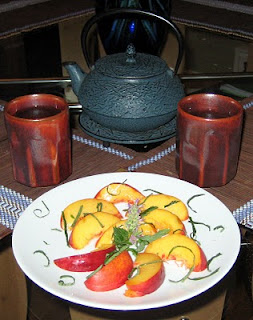Second, pizza is so often a fast food, if not in the Domino's sort of way, then in the (no doubt light-years healthier but still highly processed) Trader Joe's pop-something-gourmet-in-the-oven sort of way. And, even if it's homemade, it seems difficult to avoid the highly processed thing, given that the base is made of white flour. Nothing whole-grain about it. Even if you made it out of whole wheat flour. Unless...unless you made it out of stone-ground whole wheat flour.
Unless that.
Here then was the tripartite mission that began to form in the shadowy culinary corners of my brain: Learn how to (a) make pizza using (b) stone-ground whole wheat flour for the crust in a way that is (c) delicious. Right then.
Step 1: Find stone-ground whole wheat bread flour. This part was actually easy -- Bob's Red Mill makes stone-ground everything (not to mention lovely steel cut oats) and was well-stocked at our coop.
Step 2: Find a whole wheat pizza crust recipe. Also easy: The New York Times has one here.
Step 3: Make a pizza.
Have I mentioned that I don't bake?
Okay, here goes:

First, I made the dough for the crust from the NYTimes recipe. This picture is meant not so much to showcase my nonexistent kneading skills, as to record for all time the fact that I was in remarkably close proximity to bread dough and it did not burst into flames.

After flattening the dough on a cornmeal-dusted surface, I brushed it with 1-2 cloves pressed garlic mixed with a little olive oil, then topped with some grated Parmesan and pastured jack cheese (enough to lightly cover the crust up to about an inch from the outside), then sliced ripe tomatoes, Genovese basil chiffonade, and a little crumbled local goat cheese.
Then, I baked it for about 15 minutes at 450 until the crust was golden brown. I may or may not have spent a large portion of that time staring through the oven door at it as the crust started to look like an actual pizza crust, and I am sure I did not hoot with glee when the first pizza crust bubble formed. I mean, that would be ridiculous.
And the finished product?
Decidedly gorgeous, and pretty darn tasty. The toppings were amazing, thanks in large part to our produce box (which supplied the incredible tomatoes and fresh Genovese basil), and the crust was definitely decent.
Nonetheless, Step 4: Achieve Pizza Crust Perfection is still a work in progress. Stay tuned.




























